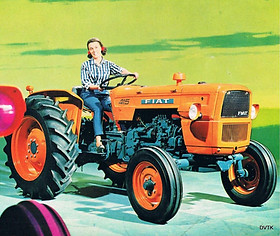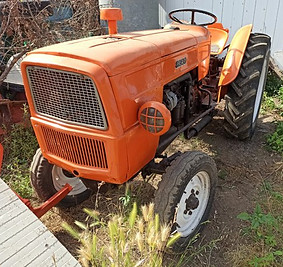top of page
FIAT 415








In the early 60's, Fiat launched an effort to streamline their lineup, with the intent of making their tractors easier to market and service, thereby strengthening their position internationally.
Fiat tractors had a reputation for being reliable, easy to maintain, and well priced. But not exactly for being or having a cohesive and original design language. For the replacement of the 100 series, Fiat therefor decided to hire the help of non other than Pinninfarina, the studio behind some of the most beautiful cars in history, and for many years Ferraris preferred designer and coachbuilder.
Introduced in 1965 the new, and officially Fiats first series, would be known as the "Diamond Series".
The 415 was the medium size tractor in the lineup, and an evolution of the 400 series that went before.
It was sold in Italy and internationally as the Fiat 415, but in France it would be sold as the Someca 415. Someca being the agricultural arm of Fiats French subsidiary Simca.
As part of Fiats new philosophy of streamlining its products, the 415 was only sold in four versions, compared to the six versions of its predecessors.
A general utility, model "N", "V" (Vigneto) and "GL" (Granluce), were now offered to costumers.
The 415 were the only model in the series to use a stressed chassis design, with the engines cast-iron crankcase being part of the tractors backbone.
The 415 shared its six forward and two reverse gearbox with the 315, including the standard PTO, locking rear differential and "Control-Matic" three-point hitch system.
But unlike the 400 and 300 tractors that came before, the gearbox now featured synchronizers between in its four highest gears. Great for road use, and a first for Fiat.
The 415 used the 400's four cylinder, watercooled prechamber diesel engine, with a displacement of 1.901 cc, now developing 34 hp at 2.500 rpm, and 108 nm at 1.600 rpm.
The Diamond Series enjoyed considerable success, with the 415 being the most succesful model in the series, having 15.000 examples of the 415 manufactured in 1965 alone.
bottom of page
